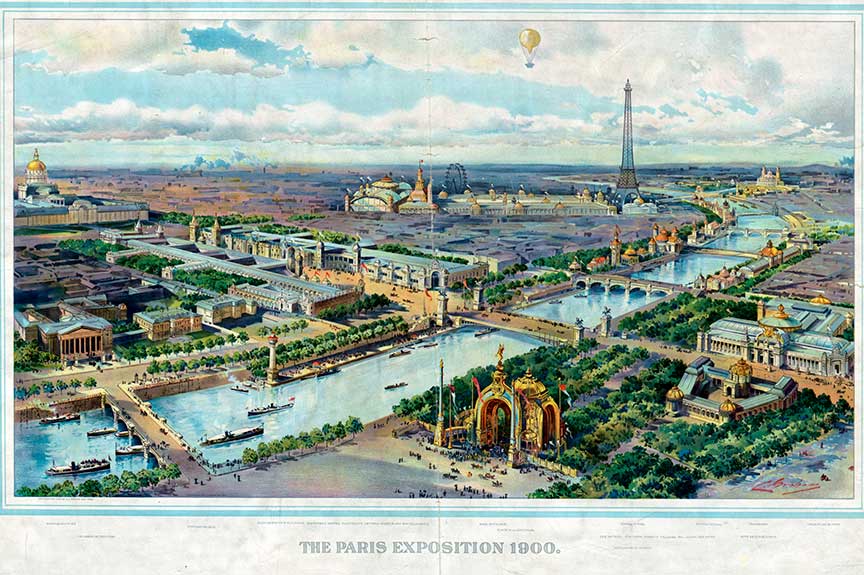1900 Escalator Introduced at Paris Expo

The 1900 Paris Exposition, celebrating the century’s achievements, introduced the escalator, a groundbreaking innovation in urban infrastructure. This “inclined elevator” amazed visitors, showcasing the era’s focus on efficiency and mechanization. Alongside other advancements like electric lighting and automobiles, the escalator symbolized progress and inspired future urban design, leaving a lasting impact on modern transportation and architecture.
The Paris Exposition of 1900, officially known as the Exposition Universelle, was a grand international event held to celebrate the achievements of the past century and mark the dawn of a new one. Organized in Paris, France, the exposition served as a showcase for technological innovations, artistic accomplishments, and cultural exchange from around the world. This event was a symbol of progress and a platform to demonstrate the extraordinary advancements humanity had made over the previous 100 years.
One of the most notable introductions at the Paris Exposition was the escalator. This innovative moving staircase captured the attention of visitors and demonstrated the potential of mechanized solutions to improve urban living and transportation. The escalator, also called the “inclined elevator,” was designed to move people efficiently between levels, marking a significant advancement in architectural design and functionality. Its debut was not merely a technical demonstration but a harbinger of modern infrastructure, which would later become a staple in urban environments like subway systems, shopping malls, and airports.
The escalator’s introduction at the exposition highlighted the growing importance of convenience and efficiency in the burgeoning industrial age. It embodied the era’s spirit of innovation and stood alongside other groundbreaking inventions, such as electric lighting, early forms of cinema, and novel transportation methods like automobiles and the first electric trains. These displays attracted millions of visitors from around the globe, each eager to witness the marvels of modern engineering and design.
The Paris Exposition was held on a massive scale, spanning hundreds of acres across central Paris, including famous landmarks such as the Eiffel Tower, which had been built for a previous exposition in 1889. The event was designed to celebrate human progress and served as a microcosm of the technological, cultural, and artistic advancements of the 19th century. Nations from around the world participated, presenting their most significant achievements in pavilions that often reflected their unique architectural and cultural styles.
The escalator was part of this broader narrative of technological optimism. Its introduction at the exposition was an immediate success, drawing crowds who marveled at its ingenuity. People eagerly stepped onto the moving staircase, fascinated by its ability to carry them upward or downward with minimal effort. The device’s simplicity, coupled with its profound implications for public infrastructure, left a lasting impression on the attendees.
Beyond its practical applications, the escalator also represented a symbolic leap into the future. Its ability to move large numbers of people effortlessly between floors hinted at a new era of urban design, where vertical space could be utilized more efficiently. The escalator’s presence at the exposition underscored the broader trend of mechanization and innovation that defined the turn of the century.
In retrospect, the Paris Exposition of 1900 was not only a celebration of the past but also a glimpse into the future. The escalator, though just one of many marvels displayed at the event, became an enduring symbol of the progress and ambition of the age. It highlighted the potential of human ingenuity to solve practical challenges and inspired further innovations that would shape the urban landscapes of the 20th century and beyond.
 >
>